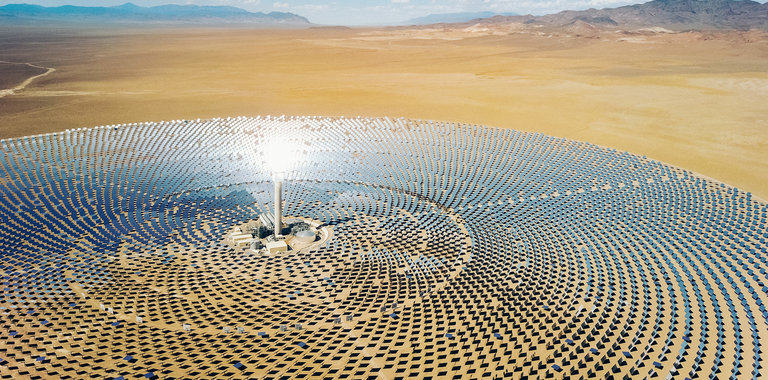Overview
Challenges
- With conditions very close to CO₂ critical point, fluid behavior shows large gradients in thermodynamic properties
- Maintain a high efficiency across a wide operating range
Results
- A CFD analysis developed with Politecnico di Milano enabled impeller design to mitigate effects of phase change and maintain performance targets
- Compressor shipment is targeted for mid 2023, and electricity production from the sCO₂ power block will start in Q4 2023
The EU is targeting net-zero greenhouse gas emissions by 2050, and concentrated solar power (CSP) could play a major role, producing as much as 11% of EU electricity by 2050. But significant efficiency gains and CAPEX reductions must first be made for key technologies. This H2020-funded project is developing a supercritical carbon dioxide (sCO2) power block that would eliminate water use in CSP and reduce its levelized cost of electricity (LCOE) to less than 10 c€/kWh. Results will have tremendous impact on CSP's viability worldwide. Baker Hughes is contributing compression and related technologies.
Supercritical carbon dioxide (sCO2) has been studied worldwide for several years as enabling technology to promote widespread adoption of CSP, and sCO2 has recently been attracting increasing industrial interest around the world.
Now, the H2020-funded “SOLARSCO2OL” project is focused on developing innovative, economically viable, and easily replicable sCO2 power block technology to increase the flexibility of CSP plants—reducing their levelized cost of electricity (LCOE) to under 10 c€/kWh in Europe, and promoting a power plant cycle layout that requires no water.
It's an important project for the European Strategic Energy Technology (SET) Plan, but also for clean power generation overall—as what's accomplished here will enable greater solar viability and flexibility all around the world.
Get the full story in PDF
For more information: https://www.solarsco2ol.eu



